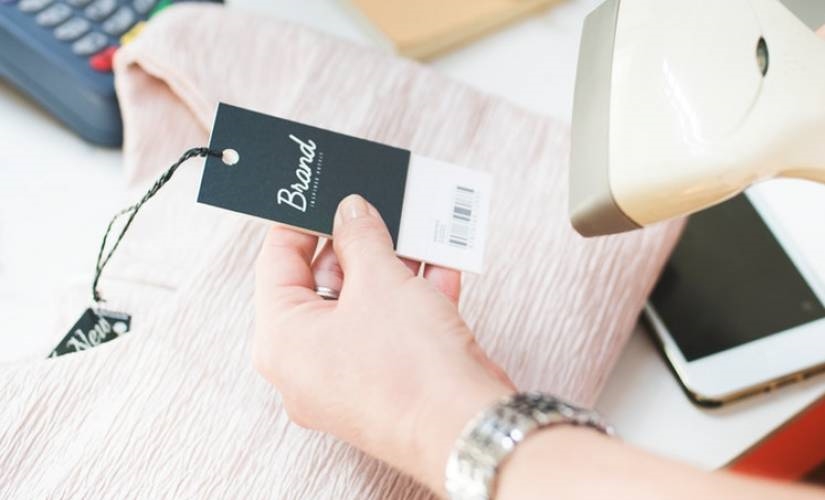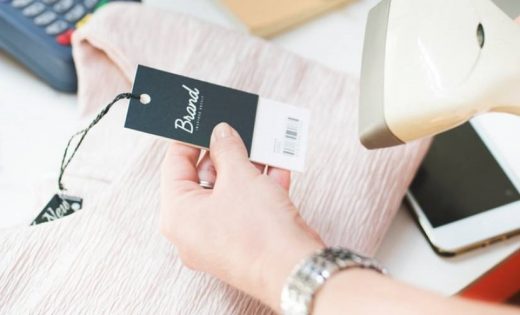Top Retailers Battle It Out With IoT In The Grocery World
Top Retailers Battle it Out With IoT in the Grocery World

In the last decade, increasing demand for convenience launched several grocery delivery services, including AmazonFresh, Postmates, and Instacart. Also known as online grocery, some retailers offer grocery delivery and pickup services to customers who don’t have time to shop. Some grocery delivery services can create shopping lists automatically, making grocery shopping even more natural.
Although online grocery shopping seems convenient, it’s not a fully developed model.
Grocery delivery services need IoT tech to work
The grocery delivery model is gaining popularity but hasn’t been delivering on its promises. The systems are flawed, and customers aren’t happy. Retailers are now turning to technology to save their online grocery services.
For example, Kroger is using autonomous vehicles from Silicon Valley-based startup Nuro to deliver groceries to make deliveries faster and cheaper. The company was considering drones, but decided cars would be more effective. If other grocery delivery services want to be successful, they’ll need to follow Kroger sooner than later.
Online grocery is struggling
Despite more retailers (and consumers) adopting grocery delivery each year, grocery delivery isn’t a profitable business model. Although grocery is an $800 billion business, it’s low-margin. Grocery stores are already barely profitable. Delivering groceries only increases the cost of doing business. It’s expensive to buy and maintain delivery vehicles, pay drivers, and keep the food cold and fresh. To make it work, retailers have to pass on the cost to the consumer. Most retailers charge a small delivery fee per order, but Amazon charges much more. For example, in 2014, it cost $299 per year to subscribe to AmazonFresh.
Every convenience comes at a price, and many are willing to pay. However, the conveniences promised by online grocery aren’t being fulfilled. Even water delivery was canceled by Instacart/Costco this week. Thanks to missing items, damaged produce, and canceled orders, consumers are paying high surcharges only to be inconvenienced instead of the absolute necessity of these deliveries. Why would someone order groceries online when they don’t know if they’ll get what they ordered? If they go to the store, they’ll walk out with exactly what they need, and it won’t cost anything extra.
What’s going on?
Online grocery creates more problems than it solves
For a business model to be profitable, it must solve a problem. Online grocery shopping doesn’t necessarily solve a problem since brick-and-mortar grocery stores work for the vast majority of consumers. Those who can’t shop pay someone else to do it for them. Grocery delivery is more of a convenience than anything else. However, that convenience seems to be theoretical since customers aren’t happy.
What’s wrong with online grocery shopping? TABS Analytics CEO Kurt Jetta explained to CBS Sunday Morning that shopping for groceries online isn’t a personal experience, and many consumers need to see prices while looking at the shelves in person. It’s harder to make price comparisons online, even with a well-designed website. The convenience offered is excellent, but some people still prefer to shop for groceries in the store.
The flaws, as seen in customer complaints, defeat the purpose of ordering groceries online. Technology is the only hope to save this business model, and retailers are starting to get the picture.
IoT can solve the problems inconveniencing customers
The grocery delivery model created more problems than it solved. If retailers want to be successful with this model, they’ll need to embrace technology to solve those problems. For example, there’s no justifiable reason a customer should receive an order with items missing, and orders should rarely need to be canceled.
Grocery delivery companies need a verification process that ensures every item is not only gathered but added to their bags that are then placed in the delivery vehicle. Canceled grocery orders have a significant impact on customers who sometimes rely on delivery for everything. If a company needs to cancel or reschedule orders because they’re out of a product, they need to rework the way they order and keep items in stock. IoT can help with that as well.
IoT can improve order verification
The process of verification should include manual and electronic systems. For instance, the person gathering the groceries should electronically check off each item as it’s gathered. The quantity of bags used to collect the order should be recorded and verified when loaded into the car. The bags should be marked and scannable so they aren’t confused with anyone else’s order. When the delivery arrives, bags should be verified and scanned as they’re unloaded. If the driver unloads the wrong bag, the handheld scanning device should alert them that they’ve scanned the wrong bag.
It’s unclear whether any current grocery delivery services use IoT tech to verify orders, but it’s unlikely considering the vast amount of people complaining about items missing from their order.
IoT can improve produce selection
There are some items people want to buy in person without exception. Things like meat, fish, and certain fruits like avocados and tomatoes are best selected in person. However, technology can help with that.
Imagine getting a Skype call from the person gathering your groceries. They’re about to pick your avocados when they call to ask you how you prefer them. Do you want them soft? Squishy? Hard? Green? Somewhere in the middle? With video chat, you can tell that person exactly how you like your produce. You can specify if you prefer firm, thick tomatoes or thin, squishy tomatoes.
Having a quick video chat with the person gathering your groceries would also create a personal connection that would make the experience a touch more personal. It wouldn’t replace the experience of selecting produce in person, but it would be good enough for many people.
It would be icing on the cake if grocery gatherers are trained to select ripe produce. This can be done with technology, too. They can learn from video training sessions and then go out to the produce and practice what they’ve learned. It’s surprising how hard it is to pick ripe produce without formal training.
Artificial intelligence can improve future orders
Once a customer has placed enough orders, artificial intelligence (AI) can be used to fine-tune their shopping experience. AI can gather information on purchase habits to suggest items when they might be running out, like laundry soap and trash bags. AI can also make suggestions for complimentary items a person might not realize they need.
Amazon tried to do something like this when they launched “Dash” buttons in 2015. Dash buttons were Wi-Fi enabled buttons consumers could stick around the house to reorder items automatically with a single push. The buttons failed, and Amazon went to an all-digital method for automatic reordering. It was a good concept, but too cumbersome to catch on.
AI can bring in money from advertisers
Brands can use the information gathered by AI technology to market to customers on social media. While many people wouldn’t like the idea of getting advertisers involved, money from advertisers is often the only way to keep a business going. The trick would be to give advertisers access to consumers’ buying habits without being too intrusive.
Is online grocery here to stay?
It’s hard to tell if online grocery is here to stay. Retailers are following in Amazon’s footsteps with grocery delivery, but many aren’t aware of the flaws.
For many, grocery delivery is a convenience. For some, it’s a necessity. It would be a shame to see the whole industry disappear due to unprofitability. Perhaps Kroger can make grocery delivery profitable with their autonomous vehicles and use technology to work out the flaws in the system.
The post Top Retailers Battle It Out With IoT In The Grocery World appeared first on ReadWrite.
(19)


